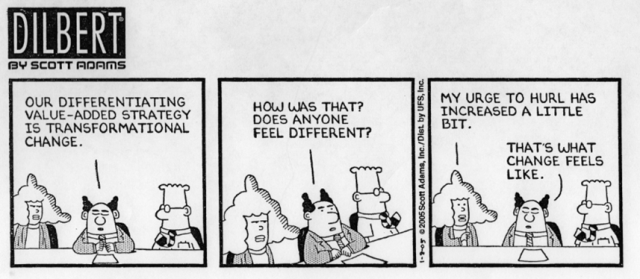
My apologies upfront if you arrived at this post under the impression it would offer up relationship advice. Instead, I’m here to discuss the increasingly common pursuit of Cross-Sector (in particular, business and non-profit) Partnerships, and where they often run into trouble.
In many ways, looking closer at what makes for a successful individual relationship (be it with your manager, your partner or anyone else for that matter) is no bad place to start when it comes to establishing what it takes to maintain decent Cross-Sector Partnerships.
As explored in last month’s post there are some fairly stock conditions and behaviours that characterise good partnering – suitable preparation, clear communications, mutually beneficial goals, openness, honesty and regular evaluation, being just a handful of examples.
Let’s assume, then, that doing the opposite to any of these conditions is immediately going to put your partnership into more perilous scenarios. None of these conditions on their own are necessarily deal-breakers or deal-makers. But, combined, they will provide a robust framework from which to explore and experiment.
So, given an understanding of the types of conditions which are optimal for partnering, what might be some of the more subtle tell-tale signs that your partnership is, in fact, headed for the rocks? Here are some to contemplate:
#1 Early onset Complacency Syndrome.
Each partnership between a business and a non-profit (let’s stick with these two types of organisation, although the rules are relevant for other sector combinations) has it’s own unique context. If we assume that both organisations have done their research upfront, are partnering towards a shared goal, and have made initial investments of resources into the partnership, it doesn’t then always follow that the rest of their partnering experience will unfold as planned.
A symptom to look out for, that can often be traced right back to the early stages, is that of complacency. In my experience, particularly where funding is involved, complacency can occur on both sides.
On the side of the business partner (typically funding the non-profit in some way) there can be an instinctive sense of entitlement. This is, perhaps, unavoidable but still worthy of note. Many relationships that a business manages include those where that business is paying for something. Albeit with an agency or with a supplier, a business and its employees can have a subconscious expectation that they are in the driving seat because it is their money enabling things to happen. If they want a meeting at short notice, or they cancel a meeting at short notice, that isn’t to be taken as disrespectful, because they are the funding entity, so they are allowed to call the shots.
On the side of the non-profit, the side most likely receiving funds, another form of complacency can emerge. Again, this isn’t always the case, but I’ve seen non-profits, who are under pressure for funds, sign “partnership” agreements with corporate donors and, once the ink is dry on the contract, the non-profit moves onto the next funding target.
The over-arching point here comes down to discipline. Whatsoever your reasons for engaging with another entity – in a relationship that you are labeling a “partnership” – it is not good enough, nor sustainable, to take anything for granted. If the fit between two organisations is honest and meaningful then, as with any of the relationships in your life to which you place value, the act of being a complacent partner will hopefully not materialise, nor be accepted.
#2 – Nurturing your Partner’s “Value-Add”.
Let me caveat that “Value-Add” is jargon. An overly-hyped phrase, it flies off the tongue at most Partnership Conferences or workshops these days. However, beneath the jargon lies a revealing symptom.
Companies who partner with non-profits, or with public sector organisations, are increasingly being asked to demonstrate their Value-Add, when it comes to helping address societal issues. A social development organisation seeking to partner with a business is under pressure to do the same. Indeed, worthy Cross-Sector Partners will identify what their Partnership brings, as a combined team. Those in the partnership will articulate what is often referred to as a “Value Proposition” even, and spend weeks and months refining this together.
When done well, taking a systematic approach to Value Addition – in our example, this translates as two organisations clearly spelling out what it is they want to achieve together, how they will be successful, and why their partnership stands out from others – can reap dividends for all involved, and deliver great outcomes for the partnership.

However, I’ve seen lip service approaches taken by organisations when it comes to recognising each other’s contributions and, as a result, not then taking steps towards helping evolve and nurture these contributions.
Organisations, particularly large ones, tend to be internally focused, strapped for time, complicated to navigate, and highly political. For those managing partnerships, there is simply not always the requisite amount of bandwidth, in one’s typical day, to spend that critical time learning more about the organisations with whom you are partnering.
This, it seems to me, is a missed opportunity. How might an organisation ever truly partner with another if that learning component is never fulfilled?
To be clear, partnering with another organisation doesn’t mean you can’t disagree with something they are doing (or have done) and it definitely shouldn’t mean you can’t call out bad practice. On the contrary, some of the companies partnering NGOs are seeking that very regular and wholesome critique from the NGOs they partner. Certain companies even evaluate their partnerships based on an NGO’s ability to do just that.
And, yet, the majority of organisations aren’t prepared to invest the time and resources to learn from each other, and learn about each other’s industry.
Which has never made sense to me, given the most rational case for establishing a Cross-Sector Partnership in the first place should be the realisation that your organisation’s goals cannot be achieved unless you work with other entities (and particularly those who bring skills and knowledge to the table that you don’t have).
Without fulfilling a commitment to explore what your differences are, and how you can compliment each other (and, over time, make each other a more rounded and robust outfit) organisations run the risk of simply partnering for partnerships’s sake.
#3 – Owning your Mistakes.
In the realm of Cross-Sector Partnerships there is a narrative shaped around what that partnership is doing (or intends to do) which often relies on a heavy dose of positive public relations. CEOs will pepper a conference speech with crowd pleasing intentions. New brand campaigns are created in the process. Press releases fly about social media. A hashtag is born. And so things escalate.
Behind the scenes, however, Cross-Sector Partnerships are reliant on individual relationships between multiple people. What can happen in the furor of a new Partnership is that individuals become carried away with the compelling narrative, and impermeable to doing wrong. And one thing we know about human relationships is that it’s doesn’t always come naturally to people to accept responsibility for things when they go wrong. This is particularly evident inside the workings of an externally published partnership, high off of its own sense of self-worthiness, and all that it has set out to accomplish.
When things go wrong in a partnership, all too often one side will blame the other (either directly or covertly). It can then be a cumbersome, and ultimately fatal, process continuing the partnership in the wake of an episode where individuals have thrown each other under the proverbial bus.
Much can be done to prevent this from happening (again, the importance of giving due consideration upfront about the nature of a partnership, or then advocating clear ways of working as the partnership progresses, are two such examples). Although the true test lies in people’s commitment to learning and to improving both their own practices and behaviours, as well as that of their respective organisations.
Doing so requires courage, some risk taking and a sharp sense of what it means to do the right thing.
I am sure many examples can be thrown back in my face of situations where organisations did the very opposite of the right thing, burying bad news stories or unethical practice, and lived to tell the tale.
Equally, I have my anecdotes of where my own handling of a sticky situation with a partner organisation was conducted in a way that protected my team from receiving just blame. Regretfully, there are probably more than one of these to recount.
And yet, I am convinced of the fact that Cross-Sector Partnering would be more impactful, with more sustained and productive outcomes, were we to work harder at trusting each other, and owning our mistakes and the times where we might have misjudged a situation. Easier, of course, to say than to live out, but we must try.
So, there you have it.
My three Tell-Tale signs to look out for when embarking on serious Cross-Sector Partnerships, and which apply to you and your partner organisation:
- Relationship Complacency;
- Not investing in each other’s Value Addition; and
- The inability to accept that Everyone Makes Mistakes, from which we can all learn.
Thanks for reading, and happy Partnering!

